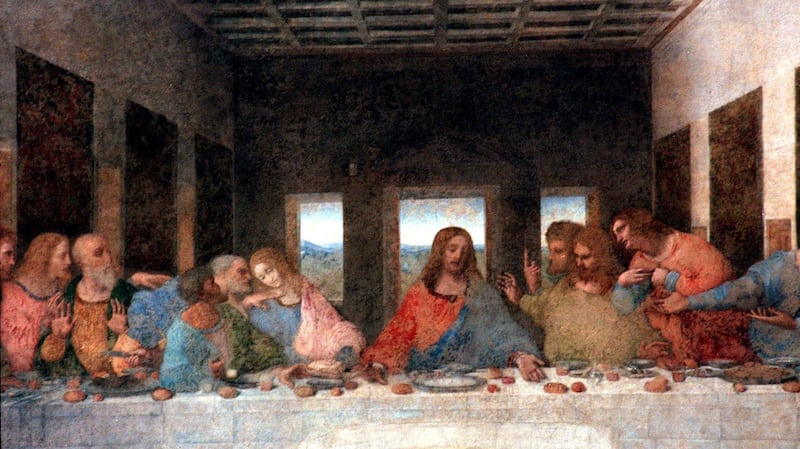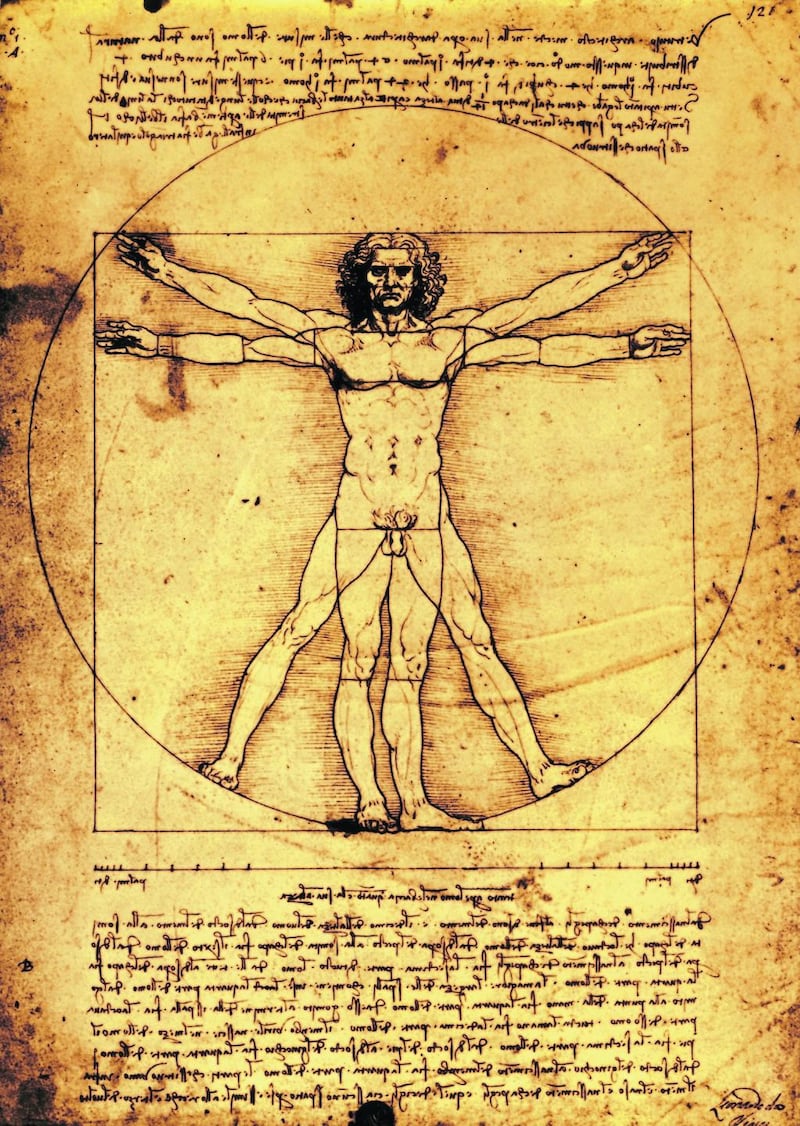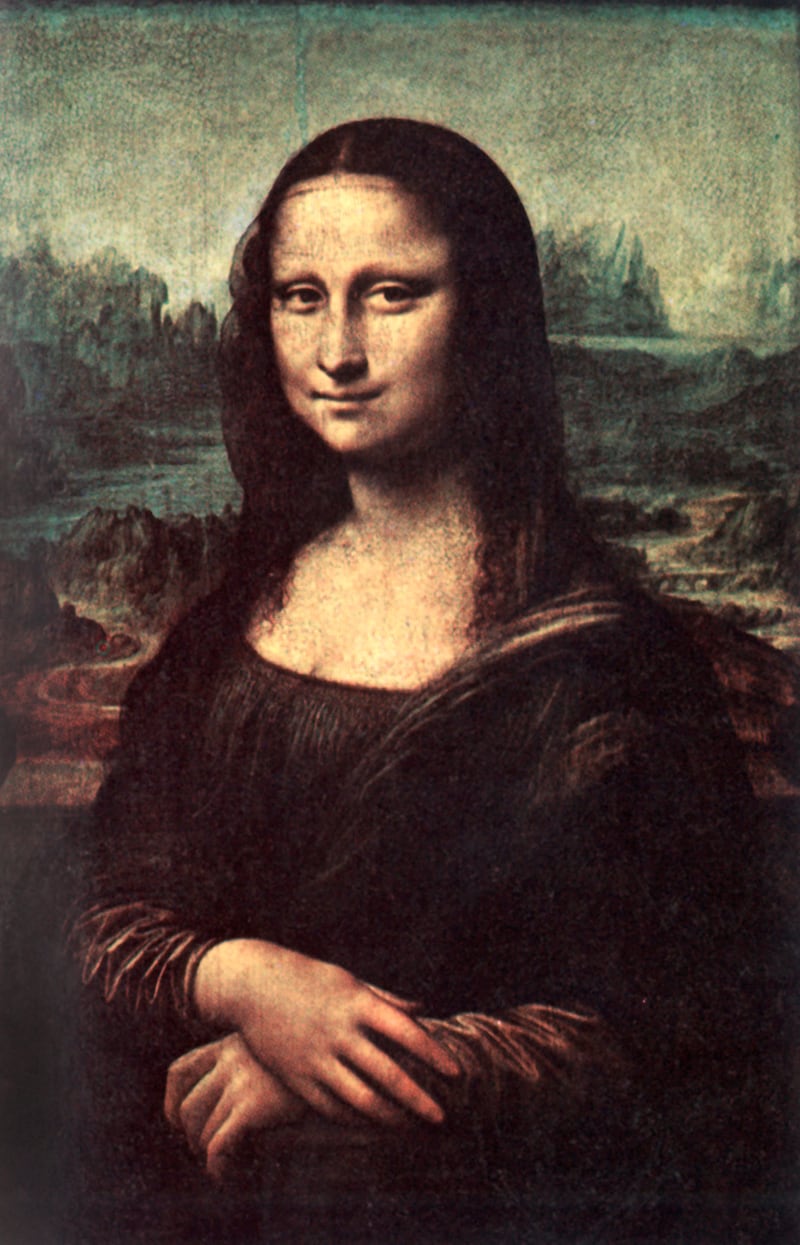Fascinated by fossils, keen on cutting up cadavers, inventor of machines of war, and painter of two of the most famous artworks in the world, Leonardo da Vinci died 500 years ago this week. Today, those keen on diverse subjects may be dismissed as dilettantes, but the term “Renaissance Man” was coined for Leonardo (and not simply because he lived during the Renaissance). It is one that might well worth reviving today.
Invention may now seem to have been easier back in the 1450s. With a pen and a sketchbook you could have a stab at coming up with pretty much anything: flying machines, the parachute, a helicopter, armoured cars, multi-barrelled guns, scuba diving equipment, new types of bridges, drainage systems . . . Leonardo had a go at them all, although it would take hundreds of years for some, such as the helicopter, to be successfully developed. He also perfected clocks and maps, investigated cirrhosis of the liver, and made the first drawing of the thyroid gland.
The question for any would-be inventor, however, is not what technologies are available, but what needs to be done to change the world, and what might you create to go about doing it. That part is timeless, whether the tools at your disposal are quantum mechanics, nano particles, or pen and ink. It is Leonardo’s questing mind, his penetrating observation, great humanity, as well as his extraordinary abilities that shaped his genius.

His is also a story that lends itself to romance, and yes, Dan Brown-esque theories of da Vinci codes. Left-handed, he wrote backwards, his mirror-writing and drawings covering more than five thousand manuscript pages. They tell of his philosophies, observations and ideas, as well as practical pages on the painting of leaves, on perspective, shadows, luminosity, the mixing of pigments and the making of colour. He left entire sketchbooks on studies of the folds of draped cloth.
Leonardo was also a great procrastinator. Commissions were left unfinished, and paintings abandoned at the sketch stage
Leonardo’s observations went into minute depth. In one notebook there are pages of notes on human and animal movement, sometimes in seemingly infinitesimal degree: “in going upstairs if you place your hands on your knees all the labour taken by the arms is removed from the sinews at the back of the knees”. You can picture him doing it, then having one of his pupils do it, so that he could watch, as well as feel the changes in the body.
One thing he didn’t invent, it seems, is the bicycle. A sketch of a pedal bike, complete with bicycle chain, was discovered in his papers, surrounded by penises (presumably sketched by his more puerile apprentices). The pages had been glued shut sometime in the 1500s, to mask the obscenity, rather than cover up the bicycle, one assumes. When the bicycle drawing was discovered in 1974, the Italians were delighted their own compatriot had invented it, but more recent analysis shows that, while two sketched circles and some curved lines date from Leonardo’s time, the rest of the image was added in the 1960s, when the pages were first reopened.
Maybe he was starting to work on one. For while genius he may have been, and also an incessant worker (greasy spots on his notebooks attest to the fact he snacked on the job) Leonardo was also a great procrastinator. Commissions were left unfinished, and paintings abandoned at the sketch stage, so that we only have 24 authenticated surviving paintings. This is also due to the fact that he was also a ferocious experimenter, so pigments vanished and paintings collapsed even during his lifetime. The Last Supper is said to have deteriorated so much that it was very soon just dots of colour. Extensive restoration followed, and very little of the original remains.

Leonardo da Vinci was born in the Tuscan hill town of Vinci (which is where the “da Vinci” part of his name comes from). His father was a Florentine legal notary, and his mother a local woman. The pair were not married, and Leonardo spent the first few years of his life with his mother, before moving to his father’s household. His talent clearly recognised, he was apprenticed at the age of 14 to the artist, Andrea di Cione, the leading Florentine painter of the time, also known as Verrocchio.
According to painter Giorgio Vasari, in 1472, Leonardo collaborated with his master on The Baptism of Christ, his part being to paint the angel holding Jesus’s robe. Verrocchio was so dismayed by his pupil’s clear superiority, Vasari writes, that he never painted again. Vasari is often known as the father of art criticism, through his The Lives artist biographies. This claim is somewhat tarnished by the fact that he also often made stuff up.
Born just eight years before Leonardo’s death, Vasari clearly had a crush on the great artist, writing that “besides a beauty of body never sufficiently extolled, there was an infinite grace in all his actions […] In him was great bodily strength, joined to dexterity, with a spirit and courage ever royal and magnanimous […] Truly marvellous and celestial was Leonardo . . .” and so it goes on.
‘Intense dislike’
All these great gifts didn’t delight everyone. Michelangelo, 23 years younger than Leonardo, couldn’t work out what all the fuss was about. Vasari says they “felt an intense dislike for each other”, and while we know not to fully trust him, there is also the story of Michelangelo mocking Leonardo for being unable to cast a horse in bronze.
In fact the sculpture for the Duke of Milan was to have been the largest horse sculpture in the world, but war interrupted the project, and the bronze was used for cannons. Five centuries later, the horse was made, following Leonardo's surviving drawings, and there are now versions in the US and Italy. Leonardo, in his turn, was on the committee to move Michelangelo's David, a move Michelangelo was strenuously against.
The two great artists' rivalry might also have had something to do with the fact that this was a time when, unless you had independent wealth and a great deal of it, you needed a wealthy patron. In 1482, Leonardo decided that Milan offered more opportunities than Florence, and wrote to the city's Duke, Ludovico Sforza, offering his services. "My most illustrious Lord," he begins, before going on to say that he can make portable bridges, "also means of burning and destroying those of the enemy", remove water from moats, and make ladders to end sieges. He adds that he has "methods for destroying every fortress or other stranglehold, unless it has been founded upon a rock". He goes on to detail cannon, catapults, trebuchets and craft for sea battles.
Rather winningly, he concludes, that “in time of peace I believe I can give as complete satisfaction as any other in the field of architecture […] Also I can execute sculpture in marble, bronze and clay. Likewise in painting . . .” He got the job.
Despite all his talk of war, he was also conflicted. In one of his notebooks, he writes of holding back all the details of his submarine equipment “by reason of the evil nature of men, who would use them for assassinations at the bottom of the sea”.

Even with all the notebooks, little is known of Leonardo’s personal life. He was arrested at the age of 24 on a charge of sodomy, which was later dropped. While homosexuality was illegal in Florence, it was also ignored where possible. Niccolò Machiavelli, advising another friend, wrote at the time: “Since we are verging on old age, we might be severe and overly scrupulous, and we do not remember what we did as adolescents. So Ludovico has a boy with him, with whom he amuses himself, jests, takes walks, growls in his ear, goes to bed together. What then? Even in these things perhaps there is nothing bad.”
The Mona Lisa is the most famous and, to some, myself included, the most disappointing painting in the world
Leonardo had a declared aversion to marriage. There was also some whispering about one of his pupils, Gian Giacomo Caprotti da Oreno, also known as Salaì (the little devil), who entered Leonardo's house at the age of ten. Vasari describes him as "a graceful and beautiful youth with curly hair, in which Leonardo greatly delighted". He is said to have stolen from Leonardo, spent copious amounts of his money, stayed with the artist for more than two decades, and wasn't a terribly good painter. He did paint a nude version of his master's famous Mona Lisa, the Monna Vanna, which is pretty dreadful, and some speculate that he, and not Lisa del Giocondo, was the real model for the Mona Lisa, though the Louvre disputes this claim.

The Mona Lisa is the most famous and, to some, myself included, the most disappointing painting in the world. Undeniably lovely, its fame diminishes its impact. Unexpectedly small, and behind bullet proof glass, as well as a crowd of selfie-taking tourists, it’s hard for it to live up to its own unasked-for hype.
Much of its fame actually derives from its theft. When it was stolen in 1911, the painting was so little-known it took the Louvre attendants three days to notice it was missing. Once the crime had been discovered however (even Pablo Picasso was questioned), people queued around the block to see the blank space where it had been. By the time it was recovered – a petty thief named Vincenzo Peruggia had taken it, and had it stashed in a trunk in his bedroom – it had become both famous, and notorious.
Died in France
Although synonymous with Florence and the Medicis as well as the Sforzas of Milan, Leonardo da Vinci died in France. By 1515, the French controlled Milan, and King Francis I offered Leonardo the role of premier painter and engineer and architect to the king. He moved to Château du Clos Lucé, in Amboise, where he died four years later, having never returned to his home country. There's a rather ghastly statue of him in Amboise, though no one is entirely sure where he is buried. The original church was demolished during the French Revolution, and while some bones were found, they have never been fully authenticated. Taking an educated (and hopeful) guess, however, you can visit "his" tomb, at the Chapel of Saint-Hubert in the gardens of the Château d'Amboise.
Exhibitions across Italy, France, and the world are planned to mark this anniversary year. Probably the largest of showing of his artworks will be in the Louvre, opening in October, although there have been arguments between French and Italian authorities over who has the right to show the most famous works. It seems a petty squabble, considering the man’s own humanism and masterly greatness. Maybe politics and nationalism will always be politics and nationalism, and some things will never change. But as we grapple with ever more complex problems, in science, medicine, climate change, and culture, we need wide-ranging, universal, unafraid thinkers more than ever. Was Leonardo one of a kind? It would be amazing, for the future, to think that maybe he won’t have been.
The mind of a master: Leonardo da Vinci on . . .
Being an artist: The painter who draws merely by practice and by eye, without any reason, is like a mirror which copies every thing placed in front of it without being conscious of their existence.
Proportions: The palm of the hand without the fingers goes twice into the length of the foot without the toes.
Marriage: Marriage is like putting your hand into a bag of snakes in the hope of pulling out an eel.
Tradition: It is better to imitate the antique than modern work.
Cats: The simplest feline is a masterpiece.
Temptation: It is easier to resist at the beginning than at the end.
Destiny: I have always felt it is my destiny to build a machine that would allow a man to fly.
Nature: Nature never breaks her own laws.












